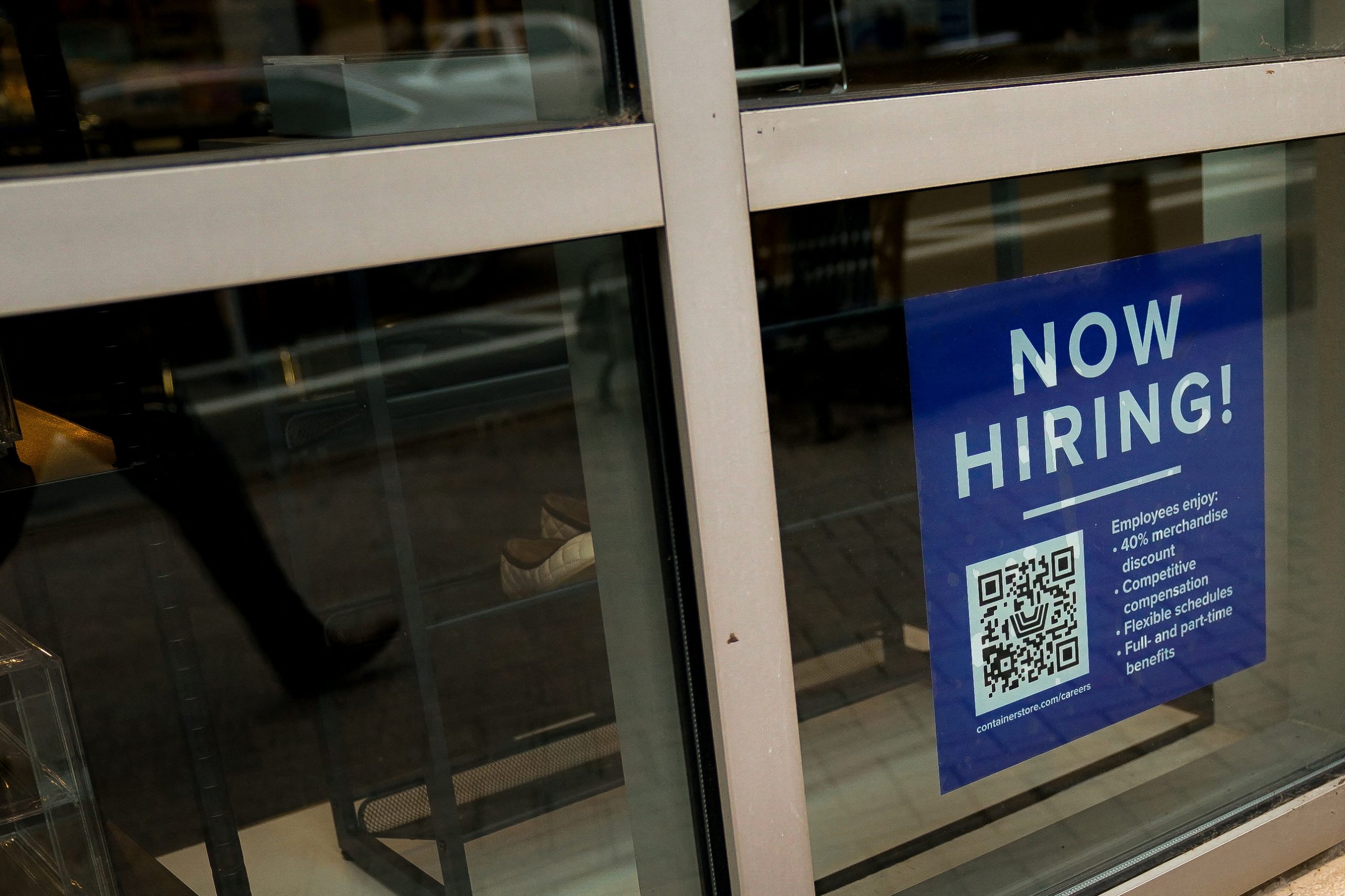Forex
US payrolls rise more than expected in May

U.S. employment increased more than expected in May, but a moderation in wages could allow the Federal Reserve to skip an interest rate hike this month for the first time since embarking on its aggressive policy tightening campaign more than a year ago.
Nonfarm payrolls increased by 339,000 jobs last month, the Labor Department said in its closely watched employment report on Friday. Data for April was revised up to show payrolls rising by 294,000 jobs instead of 253,000 as previously reported.
MARKET REACTION:
- STOCKS: S&P e-mini futures extended a gain and were last up 0.5%
- BONDS: The yield on 10-year Treasury note rose and was last up 4.3 basis points from the close at 3.651%; The two-year U.S. Treasury yield was up 10.2 basis points from Thursday at 4.443%.
- FOREX: The dollar index edged up after the data.
COMMENTS
KIM FORREST, CHIEF INVESTMENT OFFICER, BOKEH CAPITAL PARTNERS, PITTSBURGH
“While it appears to be a hot number on the actual number of people employed, the wage rate is not increasing as fast.””This is very interesting as this shows that people are returning to the workforce.””The interesting thing is yesterday’s continuing claims remain low although the number of newly unemployed continues to be consistent, so that means people are getting jobs and it looks like wage pressures are coming down because we have more people entering the workplace.””That is a softening effect and is this the mythical soft landing? Looks like that.”
“This low wage inflation number is very good news for those of us who believe the Fed should pause.”
PETER CARDILLO, CHIEF MARKET ECONOMIST, SPARTAN CAPITAL SECURITIES, NEW YORK
“Hourly wages is the key and they came in just in line with what was expected. The report, on the surface, looks strong but the fact that hourly wages are not rising moderately is a good sign. It shows that wages are not exploding and they’re beginning to moderate, even though they’re consistent from one month to another, which should be positive for markets.”
“In terms of the Fed, it doesn’t change the prospects of the Fed skipping in June, which means they will skip and leave the door open for a rate hike at the next meeting if inflation doesn’t remain elevated.”
ART HOGAN, CHIEF MARKET STRATEGIST, B RILEY WEALTH, NEW YORK
“The average hourly earnings, which is probably the more important piece of information which was estimated to be at 4.4%, came in at 4.3%. The Fed pays more attention to that particular line in the report then they do to the headline number.”
“The unemployment rate surprisingly moved from 3.4% to 3.7%. It is still an extremely low unemployment rate but (is the) first significant bump up and that’s something that we’ve been waiting for.”
“This is a reflection of a labor market that while still robust, is softening gently, not rapidly. That’s exactly what the Fed would like to see. The Fed wants to tame inflation without crushing the jobs market, and this is another piece of evidence that they’re actually well along their way to getting that accomplished.”
“We’ve got one more piece of data that’s important as it pertains to inflation before the Fed meets. But the Fed has enough evidence in hand to take a pass at the next meeting and remain data dependent for the July meeting, and that’s exactly what they’re trying to message to us.”
OLIVER PURSCHE, SENIOR VICE PRESIDENT, WEALTHSPIRE ADVISORS, NEW YORK.
“It was certainly much stronger than expected. I still think the Fed pauses I June but reiterates that it’s just a pause.”
“We’ve seen some earnings warnings, there’s a big lag in monetary policy, and we saw the unemployment rate tick up to 3.7%. Makes you wonder, is there going to be a rise in the (labor market) participation rate. That’s going to force unemployment up. There’s still an argument for the Fed to raise rates. The inflation picture is much stronger than they want it to be.”
“Right now, if you’re a Fed governor you’re very happy with this report. It continues to demonstrate the economy is resilient. Were not anywhere near a recession right now, and for the FOMC, it means they have elbow room to do the things they want to do.”
“If anything, analysts and economists are overestimating the downside risk for a recession and overestimating how quickly liquidity can be drained from the system.»

 Forex3 years ago
Forex3 years agoForex Today: the dollar is gaining strength amid gloomy sentiment at the start of the Fed’s week

 Forex3 years ago
Forex3 years agoUnbiased review of Pocket Option broker

 Forex3 years ago
Forex3 years agoDollar to pound sterling exchange rate today: Pound plummeted to its lowest since 1985

 Forex3 years ago
Forex3 years agoHow is the Australian dollar doing today?

 Cryptocurrency3 years ago
Cryptocurrency3 years agoWhat happened in the crypto market – current events today

 World3 years ago
World3 years agoWhy are modern video games an art form?

 Commodities3 years ago
Commodities3 years agoCopper continues to fall in price on expectations of lower demand in China

 Economy3 years ago
Economy3 years agoCrude oil tankers double in price due to EU anti-Russian sanctions





















